Tourmaline
Tourmaline, or tourmaline, is a general term for gem-quality tourmaline, and here’s a detailed introduction to tourmaline:
chemical composition
Tourmaline has an extremely complex chemical composition and is a boron-containing silicate with the chemical formula of the most common occupancy ions or vacancies at each location;;;;;; 1.
Crystal structure
Tourmaline belongs to the trigonal crystal system, symmetrical type, no symmetrical center, the crystal is usually columnar, the common crystal forms are trigonal column, hexagonal column, trigonal cone, etc., the shape of the two ends of the crystal is different, a typical feature is the longitudinal extension of the crystal cylinder, its cross-section is usually spherical triangle, and the fracture is usually a shell-like fracture 1.

Physical
- Color: Tourmaline is the most colorful gemstone produced in nature, including red, green, blue, purple, yellow, brown, etc., and can also have two or several color transition colors, such as blue-green, pink, yellow-brown, etc., and even two-color or multi-color phenomena can appear on the same crystal, such as watermelon tourmaline 123.
- Hardness: 7-7.5123 on the Mohs scale.
- Density: Relative density is 3.01-3.26g/cm³1.
- Refractive index: 1.624-1.644, its refractive index changes with the change of composition, when tourmaline contains more elements, its refractive index increases, black tourmaline refractive index as high as 1.627-1.6571.
- Birefringence index: 0.018-0.040, usually around 0.0201.
- Pleochroism: The intensity varies between medium and strong, and varies with body color, such as red and pink tourmaline pleochroism is often red and orange-red; Blue tourmaline is light blue and dark blue; Green tourmaline is dark green and light green; Yellow-green tourmaline is blue-green and yellow-green to brown-green1.
- Luminescency: Pink tourmaline has weak red to purple fluorescence under long-wave and short-wave ultraviolet light, while other tourmalines have no luminescence1.
- Thermoelectric and piezoelectric: tourmaline ore has no symmetrical center, when tourmaline ore is stressed in a special direction, the opposite and equal number of charges are generated on both sides of the vertical direction of the force, and the amount of charge is positively correlated with the magnitude of the force; When the ambient temperature changes, tourmaline generates an equal number of electric charges in the longitudinal direction, which can attract small and light objects1.
Chemical properties
The chemical properties of tourmaline are relatively stable, but chemical reactions may occur under certain conditions such as high temperatures, strong acids and alkalis, etc. In general, tourmaline is insoluble in water and is not easily attacked by ordinary acids and alkalis, but long-term contact may have some effect on its surface.

Distribution of origin
Tourmaline is widely distributed, and the main production areas are Brazil, Sri Lanka, Myanmar, Italy, Kenya, the United States, Afghanistan, Namibia, Zambia, Mozambique, Nigeria, etc. The origins of tourmaline in China include Xinjiang Altai, Inner Mongolia Daqingshan, Jiangxi Quannan, Yunnan Ailao Mountain, etc.
class
- Classification by color: it can be divided into red tourmaline, blue tourmaline, green tourmaline, yellow and orange tourmaline, watermelon tourmaline, black tourmaline, colorless or white tourmaline, etc.
- Classified according to special optical effects: cat’s eye tourmaline, color-changing tourmaline, etc. Cat’s eye tourmaline has a bright band of light on the curved surface, and as the gemstone or light moves, the bright line also moves, like a cat’s eye; Color change tourmaline can show blue-green in daylight and red in tungsten light, but it is rare1.
- Classified by chemical composition: it can be divided into hepatourite, fluoro-hexylite, fluorine-calcium-hecium, magnesium-calcium-magnesium tourmaline, etc., and tourmalines with different chemical compositions are also different in terms of color and other aspects1.
Quality assessment
- Color: Tourmaline with bright color, pure, and uniform value is higher, such as red, pink, blue, emerald green and other colors of tourmaline are more precious, while yellow-green and variegated tourmaline are relatively low in price1.
- Clarity: The fewer internal impurities and blemishes, the higher the clarity and the greater the value. Common impurities include mineral inclusions, gas-liquid inclusions, cracks, etc.1.
- Cut: A good cut allows tourmaline to reflect and refract light better, revealing a brighter luster and more brilliant fire, thereby enhancing its value1.
- Weight: All else being equal, the greater the weight of a tourmaline, the higher its value is usually also1.
Identification methods
- Color observation: natural tourmaline has a natural color and is unevenly distributed, while synthetic tourmaline has an overly uniform color or unnatural color12.
- Pleochroism observation: By observing the pleochroism of tourmaline, it can assist in identifying its authenticity. Different colors of tourmaline have different pleochroism, such as red tourmaline polychromacy is red and orange-red, blue tourmaline is light blue and dark blue, etc.1.
- Observation of internal features: Use a magnifying glass or microscope to observe the internal features of tourmaline, such as inclusions, cracks, etc. Natural tourmalines usually contain some mineral inclusions, gas-liquid inclusions, or growth streaks, while synthetic tourmalines have relatively few internal features or specific synthetic characteristics1.
- Hardness test: Tourmaline has a high hardness, it can be used to cut gemstones or materials with lower hardness, if it can leave scratches on its surface, it means that the gemstone may not be tourmaline, but this method will cause some damage to the gemstone, so you need to be cautious12.
- Refractive index detection: Measure the refractive index of tourmaline by a professional refractometer, its refractive index is between 1.624-1.644, if the measurement does not match this range, it may not be tourmaline1.
use
- Jewelry: Because tourmaline is rich in color, beautiful and moderately hard, it is often used to make various jewelry, such as rings, necklaces, earrings, bracelets, etc., and is deeply loved by consumers123.
- Collectible investment: High-quality tourmaline has a certain collection and investment value, and its price is expected to gradually increase as the market demand for colored gemstones continues to increase1.
- Other fields: The thermoelectric and piezoelectric properties of tourmaline make it have certain application potential in electronics, optics and other fields, but the application in these fields is relatively rare, mainly in jewelry
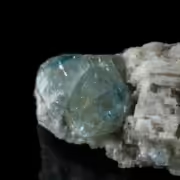
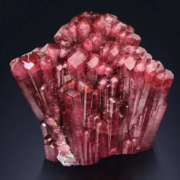
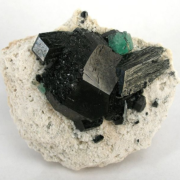
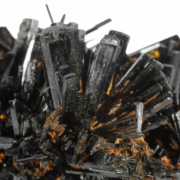
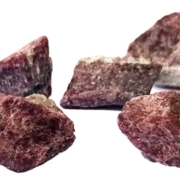
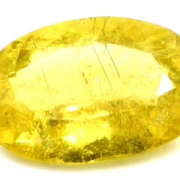
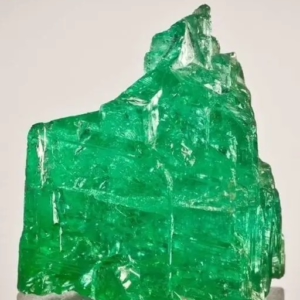
Leave a Reply
Want to join the discussion?Feel free to contribute!